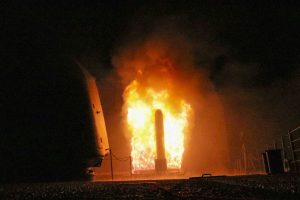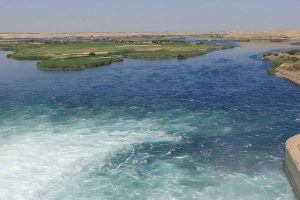Updated July 13
The United Nations World Food Programme said on Wednesday, July 12 that a newly opened land route in northeast Syria has allowed the agency to expand its aid delivery programme in the war-torn region.
The new access route runs from Damascus to Qamishli via Aleppo and Manbij. It was tested in recent weeks and allows UN agencies and their partners to reach more of the estimated 430,000 people in the Ar-Raqqa governorate in need of aid.
WFP’s delivery to Qamishli on July 7 was its first by the land route since 2014. The five trucks delivered a total of 250 metric tonnes of fortified wheat flour using the road from Aleppo via Manbij to Qamishli.

Meanwhile, the UN Refugee Agency (UNHCR), said on July 11 that it has completed the first series of humanitarian convoys by road to Qamishli in Syria’s northeastern Hassakeh governorate.
Scott Craig, spokesperson for UNHCR in Syria, told Grasswire on July 13 that the aid carried by the four convoys sent by the agency includes tents to accommodate over 20,000 people, 5000 water cans, 8000 sleeping mats and 7000 solar lamps.
On July 2, Craig told Grasswire that: “Until very recently, the only way to move humanitarian assistance into Raqqa governorate was by airlift from Damascus to Qamishli and then by road.”
“Land access is always the best option for WFP to reach Syrians in need of assistance,” said Jakob Kern, WFP Representative and Country Director in Syria. “Replacing airlifts with road deliveries will save an estimated US$19 million per year, as each truck on the road carries the equivalent of a planeload of food at a significantly lower cost. With these cost savings and improved access, we are now reaching more families and people returning to their homes who need our help with regular food deliveries.”
Kern said the savings will allow WFP to help an additional 100,000 people every year in Syria.
WFP deliveries
The new access is allowing WFP to expand its regular food deliveries to Raqqa. The agency said it has brought food assistance to new locations in the governorate, including to Mansoura, near Tabqa. WFP had not had access to the town for three years.
Since June the agency has dispatched 52 trucks to the area, and it is now delivering food to almost 200,000 people each month in eight hard-to-reach locations.
In Tabqa, the number of people the WFP has delivered monthly food rations to has now doubled to 25,000, as first reported by Grasswire on July 2.
Fact check: Has the UN begun relief efforts in Tabqa, Syria?
Through its local partners, WFP distributes monthly supplies in Tabqa, Mansoura, rural areas north of Raqqa city, Ain Issa, Journiyeh, Tal Abyad, Al-Karama and Suluk, Abu Khashab and the Mabrouka camp.
Across Syria, WFP delivers food assistance to four million people every month.

UNHCR plans regular deliveries
The new overland access has greatly improved access for the UNHCR, spokesperson Andrej Mahecic said at a July 11 press briefing in Geneva.
Following the first delivery in Qamishli on June 29, and was followed by others on July 4 and July 10, for a total of 17 trucks full of supplies. A fourth five-truck convoy is en-route and is expected to arrive in the next few days.
Regular deliveries are now planned from warehouses in Damascus, Homs and Aleppo.
The UNHCR spokesperson Scott Craig told Grasswire: “Aid on the convoys includes non-food items including blankets, water jerry cans, sleeping mats, solar lamps and plastic sheets. It also includes a large quantity of tents – including over 1000 family-size tents, to help the recently displaced or those who may be displaced as heavy fighting continues.”
“With the number of people displaced from and within Ar-Raqqa governorate now having passed 190,000 since 1 April, the opening of the road from Aleppo to Menbij and Qamishli is a breakthrough.
“It is already making a difference on the ground.”
UNHCR spokesperson Andrej Mahecic

In addition to distributing relief, UNHCR is also undertaking other work in northeastern Syria.
In Mabrouka camp to the northeast of Raqqa city, which currently hosts around 1,700 people, the agency is finalising infrastructure work including road construction and lighting. UNHCR provides other services there including facilitating medical evacuations.
In the larger Ein Issa camp, 45km north of Raqqa city, the agency has undertaken building and infrastructure work including the installation of communal kitchens to serve around 7,300 people.
UNHCR is also providing assistance at a new site near Basel Dam, approximately 25km south of Hassakeh city, where around 1,400 people, mostly from Deir Ezzor, are sheltering.







